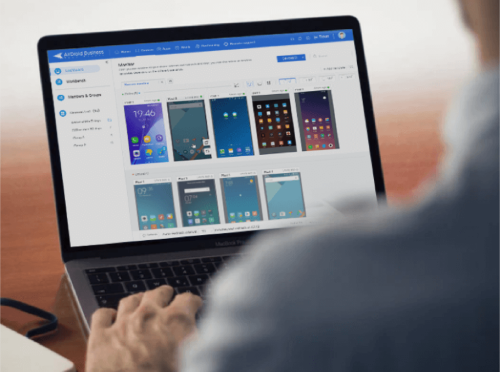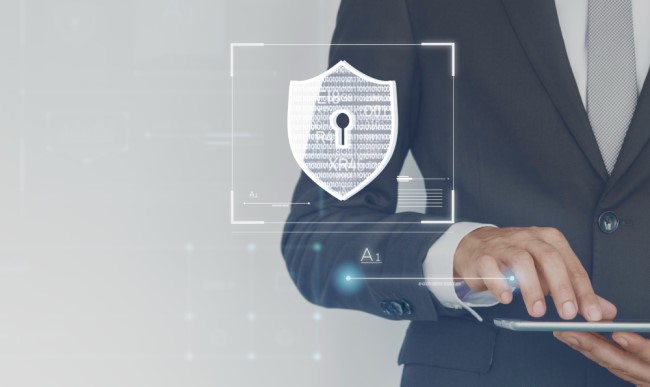What are Managed Mobility Services? How Can They Help?
The world becoming more connected has led to a greater need for managing movement in different areas. Businesses are putting effort into keeping mobile devices, apps, and data secure, as smartphones are widely used and important for modern business.
Yet, this growing demand has brought about its own set of problems. One key issue is the lack of skilled IT professionals globally, which has led to delays in putting mobility management strategies into action. With limited resources and expertise, businesses find it tough to make the most of mobile technologies while also ensuring data security.
To address these obstacles, the demand for managed mobility services has emerged as a crucial necessity. Recent statistics reveal a remarkable yearly growth rate of over 20%, underscoring the recognized value these services offer.
Hence, this article will explore the rising need for effective mobility management in today’s digital landscape, examining the hurdles.

- Part 1 : What is Managed Mobility Service?
- Part 2 : What are the key components of Managed Mobility Services (MMS)?
- Part 3 : The Challenges in Enterprise Mobility (EM)
- Part 4 : How Can Managed Mobility Services Help Your Organization?

- Part 5 : Who Should Consider Managed Mobility Services?
- Part 6 : Wrapping Up
- Part 7 : FAQs
1What is Managed Mobility Service?
Managed Mobility Services (MMS) offer a complete solution to help businesses efficiently manage their mobile devices, applications, and related setup.
As businesses seek effective ways to handle their mobile ecosystem, managed mobility service providers extend a range of services, including device setup, ongoing support, and configuration. They also assist with tasks like app distribution, security, updates, and ensuring compliance with rules and company policies.
Businesses can lighten their workload on core operations by outsourcing mobility management to specialized providers. This allows them to tap into resources they might not have in-house.
With the help of Mobility Management Services (MMS), companies can better optimize how devices are used, make workflows smoother, cut costs, lower risks, and boost employee productivity.
2What are the key components of Managed Mobility Services (MMS)?
The key components of MMS typically include:
Device Lifecycle Management (DLM)
DLM, which stands for Device Lifecycle Management, involves streamlining how devices are used within the organization. This is done by carefully planning, acquiring, maintaining, and eventually retiring them.
This process applies to various devices that employees commonly use, including laptops, cell phones, desktop computers, printers, and even smart gadgets. In essence, DLM ensures a smooth journey for devices throughout their time in the workplace.
Mobile Device Management (MDM)
MDM, or Mobile Device Management, plays a vital role in overseeing, safeguarding, and enforcing policies on devices like tablets and smartphones. This essential tool is a cornerstone of enterprise mobility solution, designed to efficiently handle all endpoint devices through a single control center.
MDM functions rely on specialized software, MDM agents, and cloud-based MDM servers. The process involves IT administrators configuring policies via the MDM server's management console.
Subsequently, these policies are wirelessly transmitted to MDM agents on devices. These agents then carry out the policies by interacting with the device's built-in application program interface (API).

Mobile Application Management (MAM)
MAM, which stands for Mobile Application Management, involves IT administrators overseeing mobile apps through approved channels.
This solution, known for boosting productivity and enhancing app security, plays a vital role. It handles various aspects of mobile app life cycles, including:
- ● App configuration
- ● App installation
- ● App distribution
- ● App uninstallation
- ● App updates
- ● Blocking apps in an organized manner
Mobile Security and Compliance
The core aspect of MMS revolves around safeguarding data security. To achieve this, providers implement various safeguards, such as encryption, remote wipe capabilities, and secure access controls.
These measures are put in place to shield sensitive information in the event of theft or loss. This ensures that the utilization of mobile devices remains in line with organizational policies and industry regulations, all the while preserving data privacy and upholding compliance standards.
Mobile Expenses and Support
Mobile expense management gives organizations the power to keep a grip on their global mobile costs.
Service providers give you a clear view of expenses, right from the mobile infrastructure down to individual departments and users. You get real-time reports and audits that offer important info about mobile expenses across the whole enterprise, helping with management.
Plus, the MMS support system helps fix device and app problems, making troubleshooting easier.

Datasheet for Mobile Device Management (MDM)
If you are looking for a better solution to secure company-owned mobile devices, you’ll want to grab our Datasheet for MDM. It’s loaded with detailed information to help you make the best decision for your organization's needs.
3The Challenges in Enterprise Mobility (EM)
Handling enterprise mobility presents several notable challenges that require practical solutions to establish a smooth and safe mobile environment. To elaborate, the following challenges come to the forefront:
1Security and Data Protection
Keeping sensitive information safe on mobile devices should be a top priority.
When employees use different devices and locations to access company data, the risk of unauthorized access and data breaches increases. To defend against online dangers, it's important to focus on data encryption, strong authentication, and secure access controls.
2Management Complexity and Integration Challenges
Managing different operating systems, devices, and apps used by employees makes enterprise mobility complex. To keep things efficient, it's vital to maintain consistent management across these platforms.
This means integrating data and mobile devices into the current IT setup and organizational systems, ensuring smooth data flow and operations.
3User Experience and Compliance Concerns
A successful EM adoption hinges on user experience. Employees expect a user-friendly mobile application that boosts productivity without sacrificing security. However, complying with industry regulations and data privacy laws, such as GDPR and HIPAA, introduces added complexity to mobility management.
4How Can Managed Mobility Services Help Your Organization?
MMS can provide valuable assistance to various organizations and businesses, offering a range of benefits, which are outlined as follows:
Reduce IT Spend
MMS providers offer budget-friendly solutions that enhance and modify mobile costs. Through centralized management of applications, devices, and data, businesses can eliminate unnecessary expenses, negotiate improved deals, and gain valuable cost transparency.
Improve Data Security
MMS providers use strong security measures to safeguard sensitive data on mobile devices. Through encryption, remote wipe capabilities, and access controls, they can lower the chances of data breaches. This helps ensure compliance with data privacy rules and safeguards a company's reputation.
A common scenario where remote wipe is needed is when an employee's company-issued mobile device is lost or stolen. In such a situation, there is a risk that sensitive company data stored on the device could be accessed by unauthorized individuals.
To prevent this potential breach of information, the company can remotely initiate a wipe command. This action erases all data and settings on the device, effectively rendering it empty and secure.
Remote wipe ensures that even if the device falls into the wrong hands, the company's confidential data remains protected, reducing the potential impact of a data breach or unauthorized access.

Increased Operational Efficiency
Through centralized control, companies can set up mobile devices, solve problems, and apply software updates, all of which contribute to improved organizational efficiency.
For instance, a multinational technology company with a variety of mobile devices can use MMS to oversee its inventory. By monitoring device health, conducting remote diagnostics, and managing device setup and updates, MMS ensures smooth operation for their worldwide staff.
Improved Workforce Productivity
MMS enhances the user experience through dependable technical support and better application performance. This means employees can smoothly access essential tools and data, boosting their effectiveness and productivity.
Moreover, MMS solutions are crafted to handle organizational growth and shifts in mobile technology. They provide scalability and flexibility, enabling companies to swiftly adjust to changing business requirements and tech trends.
5Who Should Consider Managed Mobility Services?
MMS offers a better choice for various organizations that heavily rely on mobile applications, data, and devices.
These organizations can include:
- Large enterprises with complex mobile setups
- Small and Medium Enterprises (SMEs)
- Businesses working with limited IT resources
- Regulated industries with stringent data privacy requirements
- Companies that have onboarded remote workers, faced heightened security concerns, or undergone rapid mobility expansion
This approach streamlines security, application, and mobile device management, allowing companies to focus on core operations and ensure data compliance and protection. For businesses aiming to refine mobile expenditures, boost workforce productivity, and negotiate carrier contracts, MMS proves advantageous.
6Wrapping Up
In short, Mobile Management Solutions (MMS) play a big role in today's tech era. They help businesses handle device data, cut costs, and adapt their mobility solutions easily. As tech moves forward, MMS will become even more crucial. Businesses using these services will be ready for digital challenges.
This article has shown how MMS helps organizations. It makes managing devices easier, boosts data security, and makes operations smoother. MMS works for big companies, small businesses, and industries with remote workers looking to grow in mobility.




Leave a Reply.